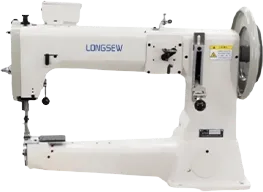what is the difference between a serger and an overlocker
When it comes to sewing, many enthusiasts often encounter the terms serger and overlocker. While these terms are often used interchangeably, understanding their differences can enhance your sewing experience.
A serger is a type of sewing machine designed specifically for finishing edges and creating professional-looking seams. It typically uses multiple threads and has a fast stitching speed, allowing you to sew different types of fabrics more efficiently. Sergers are equipped with a knife that trims the fabric edges while sewing, thereby preventing fraying and creating a clean finish. This makes them particularly useful for knit fabrics, which can be challenging with a standard sewing machine.
On the other hand, the term overlocker is commonly used in many parts of the world, particularly in Europe and Australia, to refer to what Americans call a serger. While the functionalities and purposes are essentially the same, the term overlocker emphasizes the machine's primary function to overlock the edges of fabrics together. Overlockers utilize a looped thread system, which allows for stretch and flexibility, making them ideal for constructing garments that require elasticity.
One key difference between sergers and overlockers may lie in their capabilities; some models serve as a hybrid machine, combining features of both serging and traditional sewing. These advanced machines provide additional stitch options, allowing users to create decorative seams or even perform simple embroidery. Conversely, standard sergers are often limited to basic overlocking stitches.
what is the difference between a serger and an overlocker

Another aspect to consider is ease of use. Sergers can sometimes be more complex to thread and operate, particularly for beginners. Overlockers, especially those that are user-friendly, may come with color-coded threading guides and simpler tension adjustment options. This can make them more approachable for novice sewers.
The choice between a serger and an overlocker ultimately depends on where you are located and your specific sewing needs. If you reside in a region where the term overlocker is prevalent, it is essential to understand that you're likely looking for a machine with similar functions to a serger in the U.S. Regardless of the terminology, both machines are invaluable tools for anyone looking to produce high-quality sewing projects efficiently.
In summary, while there's a semantic difference between a serger and an overlocker, they share common functionalities and purposes. Both machines provide seam finishing and edge protection, making them essential for seamstresses and tailors. Understanding their features and capabilities will help you make an informed choice, enhancing your sewing journey.
-
Boost Production Efficiency with a Pattern Sewing MachineNewsAug.29,2025
-
Industrial Excellence with the Best Heavy Duty Sewing MachineNewsAug.29,2025
-
Precision and Power with the Best Pattern Sewing MachineNewsAug.29,2025
-
Reliable Bulk Packaging Starts With the Right FIBC Sewing MachineNewsAug.29,2025
-
Advanced Packaging Solutions: Elevate Productivity with Jumbo Bag Sewing Machine and Industrial Stitching EquipmentNewsAug.29,2025
-
High-Performance Solutions for Bulk Packaging: FIBC Sewing Machine and MoreNewsAug.29,2025
-
Maximize Efficiency with an Industrial Cylinder Arm Sewing MachineNewsAug.28,2025


























